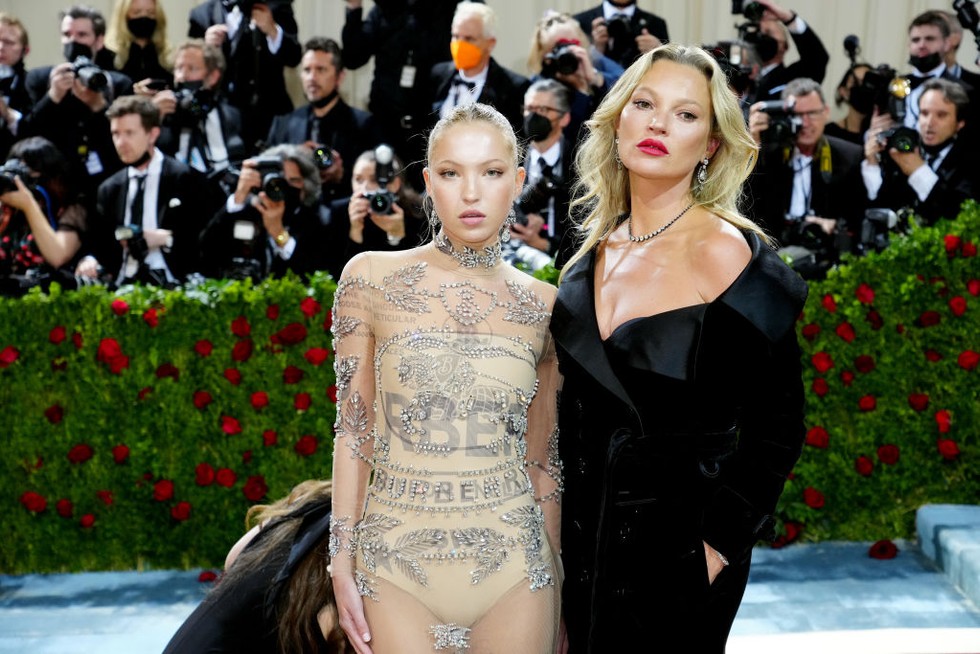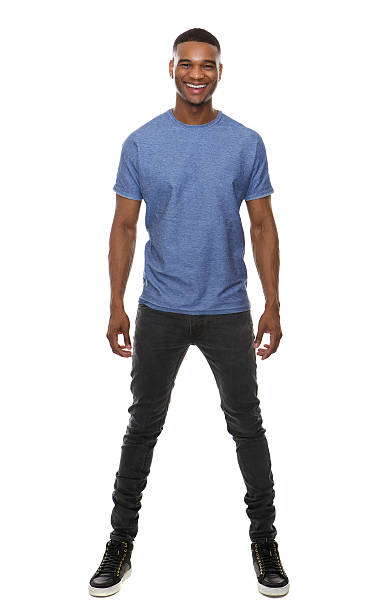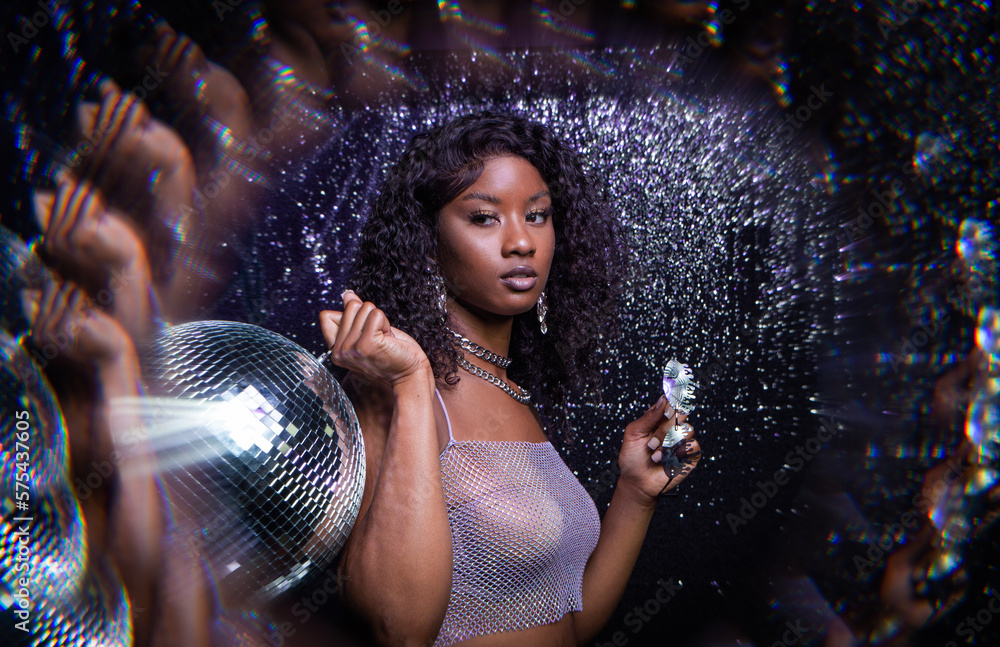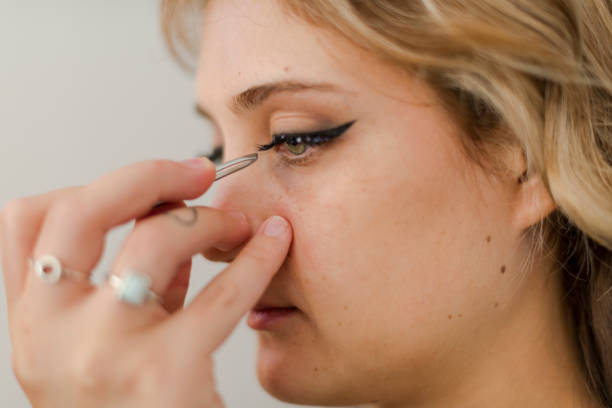![How to Create a Modeling Portfolio [with Examples]](/_next/image?url=%2Fuploads%2F2024%2F11%2FHow-to-make-a-modeling-portfolio-1-1024x576.bk.jpg&w=1920&q=75)
Ever wondered how supermodel Kate Moss went from an unknown 14-year-old at JFK Airport to one of the world's highest-paid models? The secret weapon? A killer modeling portfolio that caught the right eyes at exactly the right moment.

Your portfolio isn't just a collection of pretty pictures. it's your golden ticket to the modeling industry's most exclusive doors.
Creating a standout modeling portfolio requires more than just good looks and expensive photography. You need the right mix of professional images, strategic planning, and industry knowledge to craft a portfolio that makes casting directors stop scrolling and start booking. Whether you're aiming for fashion runways, commercial campaigns, or influencer collaborations, your portfolio speaks before you even enter the room.
But here's where most aspiring models stumble. They either overthink the process or underestimate its importance.
Ready to discover the exact formula that transforms ordinary headshots into career-launching portfolios? Let's get into the essential strategies that separate working models from wannabes, complete with real examples and insider tips that could change your modeling trajectory forever.
What Makes a Modeling Portfolio Effective in 2025?
Today's modeling portfolio landscape looks dramatically different from the leather-bound books models carried to castings just a decade ago. Digital portfolios now dominate the industry, with 87% of casting decisions beginning with online portfolio reviews according to recent industry surveys.
Your portfolio serves as your visual resume, business card, and marketing tool rolled into one powerful package. It must capture attention within the first three seconds. the average time casting directors spend on initial portfolio reviews.
The most effective portfolios tell a story about your versatility while maintaining a cohesive brand identity. They showcase not just how you look, but how you move, express emotion, and adapt to different concepts.
Digital vs. Physical Portfolios: What's Right for You?
While physical portfolios still have their place in certain high-end fashion circles, digital portfolios offer unmatched accessibility and flexibility. You can update them instantly, share them globally, and track engagement metrics.
Digital portfolios also cost significantly less to maintain. No more printing hundreds of comp cards or worrying about damaged photographs during transport.
However, luxury fashion brands and top-tier agencies sometimes still prefer the tactile experience of physical portfolios. Consider your target market when making this decision.
Essential Portfolio Components That Get You Noticed
Every successful modeling portfolio contains specific elements that industry professionals expect to see. Your headshots should comprise 30-40% of your portfolio, showcasing both smiling and serious expressions with professional lighting and retouching.
Full-body shots demonstrate your proportions, posture, and overall physique. These images should be clean, well-lit, and show your natural body shape without excessive editing.
Lifestyle and editorial shots prove your ability to embody different characters and moods. These images often become the deciding factor between booking and being passed over.
Types of Modeling Portfolios by Specialty
Fashion and Editorial Modeling Portfolios
Fashion portfolios demand high-concept imagery that pushes creative boundaries. Think dramatic lighting, avant-garde styling, and editorial storytelling that wouldn't look out of place in Vogue or Harper's Bazaar.
Your fashion portfolio should include at least three different editorial concepts. One classic beauty shot, one high-fashion avant-garde image, and one commercial-fashion hybrid that shows versatility.
Color coordination matters enormously in fashion portfolios. Stick to a cohesive color palette that complements your natural coloring and creates visual harmony across images.
Commercial Modeling Portfolio Requirements
Commercial portfolios prioritize relatability and approachability over high-fashion drama. These images should feel authentic, warm, and representative of real-life scenarios where products are used.
Include lifestyle shots showing you engaged in everyday activities. drinking coffee, laughing with friends, or walking through a park. These images help casting directors envision you in their campaigns.
Diversity in wardrobe and settings proves your adaptability across different commercial contexts. One day you might model athletic wear, the next business attire.
Fitness and Athletic Modeling Specifications
Fitness portfolios require images that showcase muscle definition, athletic ability, and healthy lifestyle choices. Lighting becomes crucial for highlighting muscle tone and creating dynamic shadows.
Action shots demonstrate your physical capabilities and add energy to your portfolio. Consider including images of you running, lifting weights, or performing yoga poses.
Wardrobe selection should emphasize your physique while remaining tasteful and professional. Athletic wear, swimwear, and form-fitting casual clothes work best.
Plus-Size and Curve Modeling Portfolios
The plus-size modeling market has exploded, with brands like Savage X Fenty and ASOS Curve leading the charge. Your portfolio should celebrate your curves while maintaining the same professional standards as any other modeling category.
Confidence radiates through every image in successful plus-size portfolios. Work with photographers who understand how to light and pose curvier figures to your best advantage.
Include a range of styling from casual to glamorous, proving your versatility across different market segments within the plus-size industry.
Planning Your Portfolio Photoshoot
Setting Your Budget: Professional vs. DIY Approaches
Professional modeling portfolio photoshoots typically cost between $500-$2,500, depending on your location and the photographer's experience level. This investment includes photography, basic retouching, and usually 5-10 final images.
Many successful models started with Trade for Print (TFP) arrangements with emerging photographers. Both parties build their portfolios without money changing hands. a win-win for beginners.
DIY portfolios can work if you have access to quality equipment and understand lighting principles. However, the difference between amateur and professional photography becomes immediately apparent to industry insiders.
Finding the Right Photographer for Your Vision
Research photographers who specialize in your modeling category. A photographer who excels at fitness modeling might not understand the nuances of high-fashion editorial work.
Review their complete portfolio, not just their highlight reel. Look for consistency in quality and lighting across different shoots and models.
Communication style matters enormously. Your photographer should understand your career goals and help translate them into compelling imagery.
Location Scouting and Concept Development
Location choice dramatically impacts your portfolio's mood and marketability. Urban environments suggest edginess and contemporary appeal, while natural settings convey authenticity and timelessness.
Consider locations that complement your physical features and personal brand. Fair-skinned models often photograph beautifully against darker backgrounds, while deeper skin tones pop against lighter environments.
Budget for location fees and travel time when planning outdoor shoots. Some locations require permits or have usage restrictions that could affect your shoot.
Wardrobe Selection and Styling Tips
Your wardrobe budget should equal roughly 30% of your total photography budget. Quality clothing photographs better and helps you look more expensive in images.
Stick to classic silhouettes and avoid trendy pieces that might date your portfolio quickly. Solid colors generally work better than busy patterns, which can distract from your face and figure.
Bring backup options for every outfit category. If a shirt wrinkles or doesn't photograph well, you'll need alternatives ready immediately.
Essential Images Every Portfolio Needs
The Perfect Headshot: Technical and Artistic Elements

Your headshot is arguably the most important image in your portfolio. It should capture your personality while maintaining commercial appeal and professional quality.
Lighting should be soft and flattering, typically coming from a large source positioned slightly above eye level. Harsh shadows under the eyes or nose create unflattering images that won't book jobs.
Expression matters more than most people realize. Practice different expressions in the mirror before your shoot, focusing on engaging your eyes rather than just smiling with your mouth.
Full-Body Shots That Showcase Your Proportions

Full-body images prove your proportions and posture while demonstrating how you carry yourself. These shots should be clean, well-lit, and show your natural silhouette without excessive posing.
Posture makes or breaks full-body shots. Stand tall with shoulders back and chin slightly forward. Avoid locking your knees or creating tension in your body.
Clothing should fit perfectly without being too tight or too loose. Even slight fit issues become magnified in professional photography.
Lifestyle and Editorial Images for Versatility

Lifestyle images show you in natural, relatable scenarios that help casting directors envision you in their campaigns. These shots should feel authentic rather than overly staged.
Editorial images demonstrate your ability to embody different characters and moods. They often involve more dramatic styling, lighting, and concepts than lifestyle shots.
Balance is key. include both types to show your range without confusing your brand message.
Detail Shots: Hands, Eyes, and Profile Views

Detail shots highlight your best features and provide options for different types of bookings. Hand modeling, for example, requires specific shots that showcase nail shape, skin texture, and finger length.
Eye close-ups work well for beauty campaigns and can help casting directors assess your potential for cosmetics work.
Profile shots reveal your bone structure and can be particularly important for certain types of fashion and editorial work.
Professional Photography vs. Self-Portraits
When to Invest in Professional Photography
Professional photography becomes essential when you're serious about booking paid modeling work. The quality difference between professional and amateur photography is immediately apparent to industry professionals.
Invest in professional photography after you've developed some modeling skills and understand your strengths. This timing ensures you'll get maximum value from your investment.
Consider professional photography a business expense rather than a luxury. The right images can earn back their cost many times over through booking fees.
DIY Photography: Equipment and Techniques
If budget constraints require DIY photography, invest in proper lighting equipment before upgrading your camera. Good lighting transforms mediocre cameras into professional-quality tools.
Natural light can produce beautiful results if you understand how to work with it. The golden hour shortly after sunrise or before sunset. provides flattering, soft light that enhances most subjects.
Shooting in RAW format gives you more flexibility during editing, allowing you to correct exposure and color issues that might ruin JPEG files.
Smartphone Photography: Maximizing Your Results
Modern smartphones can produce surprisingly professional results when used correctly. The key lies in understanding their limitations and working within them.
Use natural light whenever possible, as smartphone cameras struggle in low-light situations. Position yourself near a large window for the most flattering illumination.
Invest in smartphone photography accessories like external lenses, tripods, and reflectors to expand your capabilities without professional camera costs.
Working with Emerging Photographers
Collaborating with emerging photographers can benefit both parties when approached professionally. Many talented photographers need portfolio images just as much as you do.
Establish clear expectations before any TFP shoot. Discuss image ownership, usage rights, and delivery timelines to avoid misunderstandings later.
Review their existing work carefully and ensure their style aligns with your portfolio goals. A mismatch in artistic vision rarely produces usable results for either party.
Digital Portfolio Platforms and Presentation
Choosing the Right Platform for Your Needs
Platform selection dramatically impacts how industry professionals perceive and interact with your portfolio. Free platforms like Instagram work for beginners, but professional platforms create better impressions.
Consider your target audience when choosing platforms. Fashion industry professionals often prefer sleek, minimalist presentations, while commercial agents might favor platforms with more interactive features.
Many successful models use multiple platforms strategically. Instagram for discovery and engagement, professional portfolio sites for serious submissions.
Website Builders vs. Specialized Portfolio Platforms
Specialized portfolio platforms like Format or Squarespace offer templates designed specifically for visual professionals. These platforms typically produce more polished results than general website builders.
Custom domain names (yourname.com) appear more professional than subdomains (yourname.platform.com) and help with search engine optimization.
Consider platforms that offer mobile optimization, as many casting directors now review portfolios exclusively on mobile devices.
Optimizing for Mobile Viewing
Mobile optimization isn't optional. It's essential. Studies show that 73% of modeling portfolio views now happen on mobile devices during casting processes.
Test your portfolio on multiple devices and screen sizes to ensure images load quickly and display properly. Slow-loading portfolios often get skipped entirely.
Keep navigation simple and intuitive. Complex menu systems that work on desktop computers often become unusable on smartphones.
SEO Strategies for Maximum Visibility
Search engine optimization helps potential clients discover your portfolio organically. Include relevant keywords in your image descriptions and portfolio text.
Local SEO becomes particularly important if you're targeting regional markets. Include your location in key areas to improve visibility for location-specific searches.
Regular content updates signal to search engines that your portfolio remains active and relevant, potentially improving your search rankings.
Portfolio Organization and Presentation
Curating Your Best Work: Quality Over Quantity
Your portfolio should include 15-25 images maximum. Quality always trumps quantity in professional portfolios, and too many images dilute the impact of your best work.
Lead with your strongest image and end with your second-strongest. This creates a powerful first impression and leaves viewers with a memorable final image.
Remove images ruthlessly if they don't meet professional standards. One weak image can undermine the perception of your entire portfolio.
Creating Flow and Visual Storytelling
Successful portfolios tell a cohesive story about who you are as a model. Images should flow together naturally, creating a visual rhythm that keeps viewers engaged.
Vary your poses, expressions, and styling throughout the portfolio while maintaining consistency in quality and artistic vision.
Consider the emotional journey you want viewers to experience as they progress through your images.
Categorizing Images by Style and Market
Organize images into clear categories that align with different market segments. This organization helps casting directors quickly find relevant images for specific projects.
Common categories include headshots, full-body shots, lifestyle, editorial, and commercial images. Some models also include special skills or niche categories.
Make navigation intuitive so viewers can easily find the type of images they need for their specific casting requirements.
Regular Updates and Portfolio Maintenance
Update your portfolio every 3-6 months with fresh images that reflect your current look and skill level. Outdated portfolios suggest lack of current activity in the industry.
Remove older images that no longer represent your best work or current appearance. Your portfolio should always showcase your most recent and highest-quality imagery.
Track which images generate the most interest and bookings, then create similar content to capitalize on what works.
Common Portfolio Mistakes to Avoid
Over-Editing and Unrealistic Retouching
Heavy-handed retouching creates unrealistic expectations and can lead to problems during actual shoots. Casting directors need to see what you actually look like.
Basic retouching should address technical issues like blemishes or lighting imperfections while preserving your natural features and proportions.
When in doubt, err on the side of natural-looking images. Authentic beauty sells better than artificial perfection in today's market.
Inconsistent Quality and Style
Mixing amateur and professional images in the same portfolio creates confusion about your professional level and commitment to your modeling career.
Maintain consistent quality standards throughout your portfolio, even if it means having fewer total images initially.
Style consistency doesn't mean every image should look identical, but they should feel like they belong to the same professional body of work.
Poor Image Selection and Outdated Content
Including outdated images that no longer represent your current appearance can lead to disappointment during castings when you don't match your portfolio.
Avoid including images just because you like them personally. Every image should serve a specific purpose in marketing your modeling services.
Regular portfolio audits help identify and remove images that no longer serve your career goals effectively.
Neglecting the Business Side of Portfolios
Many aspiring models focus entirely on the creative aspects while ignoring business considerations like image rights, usage agreements, and marketing strategy.
Understand what rights you're granting when sharing images and ensure you retain appropriate usage rights for your own portfolio and marketing needs.
Track which images and platforms generate the most inquiries and bookings to optimize your marketing efforts over time.
Working with Agencies and Casting Directors
Preparing for Agency Submissions
Agency submissions require specific image formats and information. Research each agency's submission requirements carefully to avoid immediate rejection for technical reasons.
Most agencies prefer digital submissions over physical portfolios for initial reviews. Prepare high-resolution images that showcase your range and marketability.
Include basic statistics (height, weight, measurements) and contact information in a clear, professional format that's easy for agents to reference quickly.
Digital Comp Cards and Tear Sheets
Digital comp cards serve as your business card in the modeling industry. They should include your best headshot, full-body shot, and basic statistics on a single page.
Keep comp card design clean and professional. Busy layouts or amateur design work can overshadow even excellent photography.
Update comp cards regularly to reflect your current appearance and most recent professional work.
Portfolio Presentations During Castings
Prepare different versions of your portfolio for different types of castings. Fashion castings might require different images than commercial auditions.
Practice presenting your portfolio confidently and concisely. You might have only minutes to make an impression during busy casting sessions.
Bring backup copies of your portfolio in multiple formats in case of technical difficulties or specific platform requirements.
Building Relationships
Professional casting platforms like ProjectCasting.com connect models with legitimate opportunities while providing valuable industry networking opportunities.
ProjectCasting offers verified casting calls and helps you avoid scams common in the modeling industry. Their platform connects you directly with casting directors, producers, and agencies seeking new talent.
Create a compelling profile on this platform that highlights your unique strengths and includes your best portfolio images. Many successful models have launched their careers through connections made on professional casting platforms.
Measuring Portfolio Success and ROI
Tracking Engagement and Booking Rates
Monitor key metrics like portfolio views, contact form submissions, and actual booking rates to understand your portfolio's effectiveness.
Use analytics tools to identify which images generate the most interest and which platforms drive the most qualified inquiries.
Set realistic goals for portfolio performance and adjust your strategy based on actual results rather than assumptions.
A/B Testing Different Portfolio Versions
Test different portfolio arrangements, lead images, and presentations to optimize for maximum bookings and engagement.
Small changes in image order or portfolio structure can significantly impact viewer response rates and booking conversion.
Document what works and what doesn't to inform future portfolio updates and improvements.
Calculating Your Investment Return
Track all portfolio-related expenses including photography, styling, platform fees, and promotional costs against booking revenue generated.
Successful modeling portfolios typically pay for themselves within 6-12 months through increased booking rates and higher-paying opportunities.
Consider portfolio expenses as business investments rather than costs, and make decisions based on potential return rather than upfront expense.
Long-term Career Planning Through Portfolio Evolution
Plan portfolio updates strategically to support your long-term career goals rather than just immediate booking needs.
Consider how your portfolio positions you in the market and whether it aligns with where you want your career to go in the next 2-3 years.
Successful models continuously evolve their portfolios to reflect their growing experience and changing market opportunities.
Conclusion: Your Portfolio Is Your Future
Creating a successful modeling portfolio requires strategic thinking, professional execution, and continuous refinement. Your portfolio isn't just a collection of beautiful images. It's a powerful marketing tool that can transform your modeling aspirations into a thriving career.
The modeling industry rewards preparation, professionalism, and authenticity. By following the strategies outlined in this guide, you'll create a portfolio that stands out in a crowded market and attracts the right opportunities for your unique strengths and career goals.
Remember that portfolio development is an ongoing process, not a one-time event. As you gain experience and refine your skills, your portfolio should evolve to reflect your growth and expanding capabilities. The investment you make in professional photography, strategic planning, and thoughtful presentation will pay dividends throughout your modeling career.
Your portfolio is your future. make it count.
Frequently Asked Questions
Q1: How many photos should be in a modeling portfolio?
A professional modeling portfolio should contain 15-25 high-quality images maximum. Quality always trumps quantity in the modeling industry. Your portfolio should include a mix of headshots (30-40%), full-body shots, lifestyle images, and editorial work that showcases your versatility without overwhelming viewers. Remember, casting directors often spend less than 60 seconds reviewing portfolios, so every image must serve a specific purpose.
Q2: How much should I budget for a professional modeling portfolio?
Professional modeling portfolios typically cost between $500-$2,500, depending on your location and photographer's experience. This investment usually includes photography, basic retouching, and 5-10 final images. Beginners can start with Trade for Print (TFP) arrangements with emerging photographers, while established models might invest $1,000-$3,000 for premium packages including multiple looks, locations, and extensive retouching.
Q3: Should I use a digital or physical modeling portfolio?
Digital portfolios dominate the modern modeling industry, with 87% of casting decisions beginning with online reviews. Digital portfolios offer instant updates, global accessibility, and cost-effective maintenance. However, some luxury fashion brands and high-end agencies still prefer physical portfolios for their tactile appeal. Consider creating both formats, starting with digital for maximum reach and adding physical versions as your career advances.
Q4: How often should I update my modeling portfolio?
Update your modeling portfolio every 3-6 months with fresh images that reflect your current appearance and skill level. Remove older images that no longer represent your best work or current look. Regular updates signal to casting directors that you're actively working and evolving as a model. If you've significantly changed your appearance, style, or target market, update immediately to avoid disappointing clients who book based on outdated images.
Q5: What's the biggest mistake new models make with their portfolios?
The biggest mistake is including inconsistent quality images that mix amateur and professional photography. This creates confusion about your professional level and undermines even your best images. Other common mistakes include over-editing that creates unrealistic expectations, including too many similar images, and neglecting mobile optimization when 73% of portfolio views happen on mobile devices. Focus on curating fewer, higher-quality images that tell a cohesive story about your modeling capabilities.
author-1745736973182-nb117ql
Content creator at ShowbizPromotions, specializing in entertainment industry trends and marketing strategies.